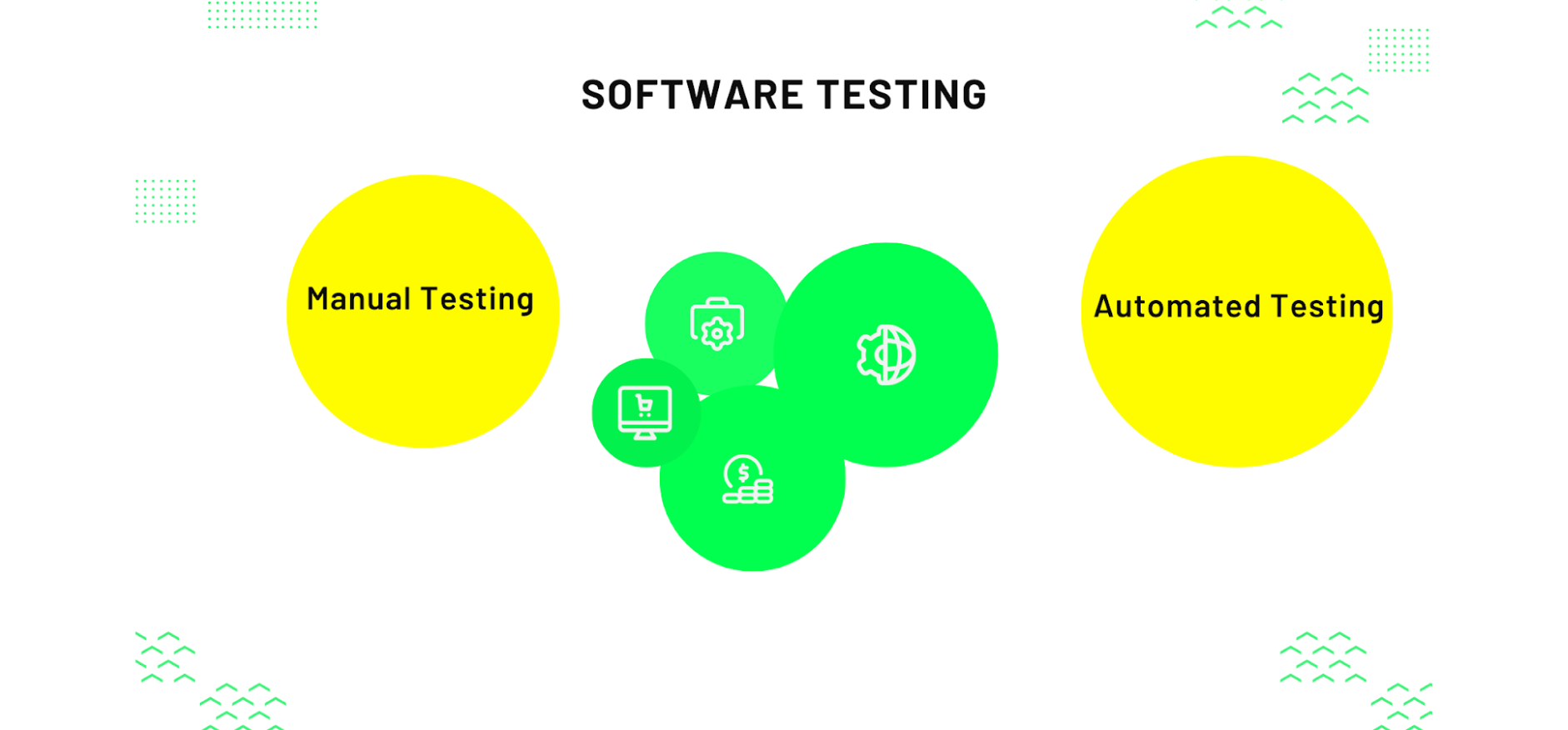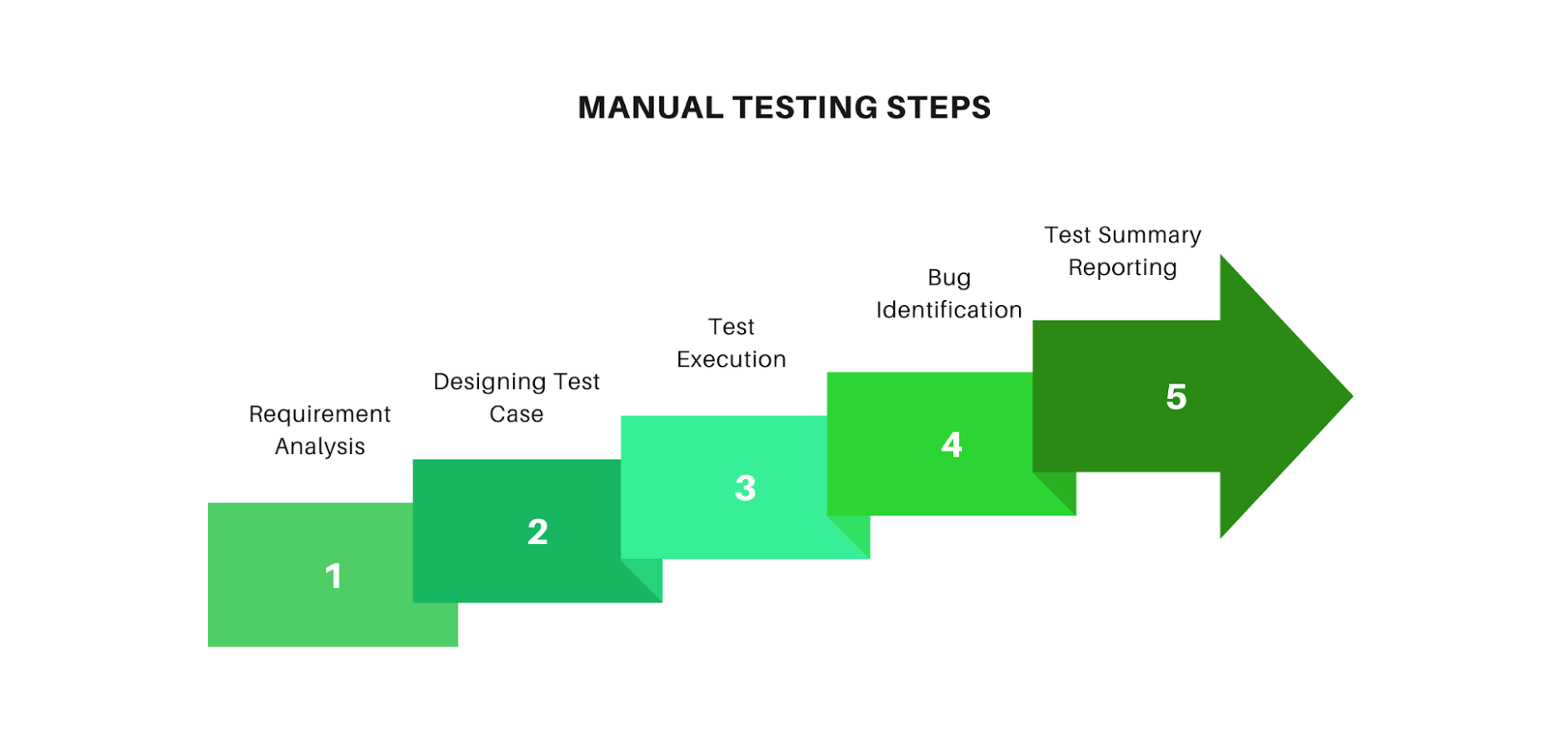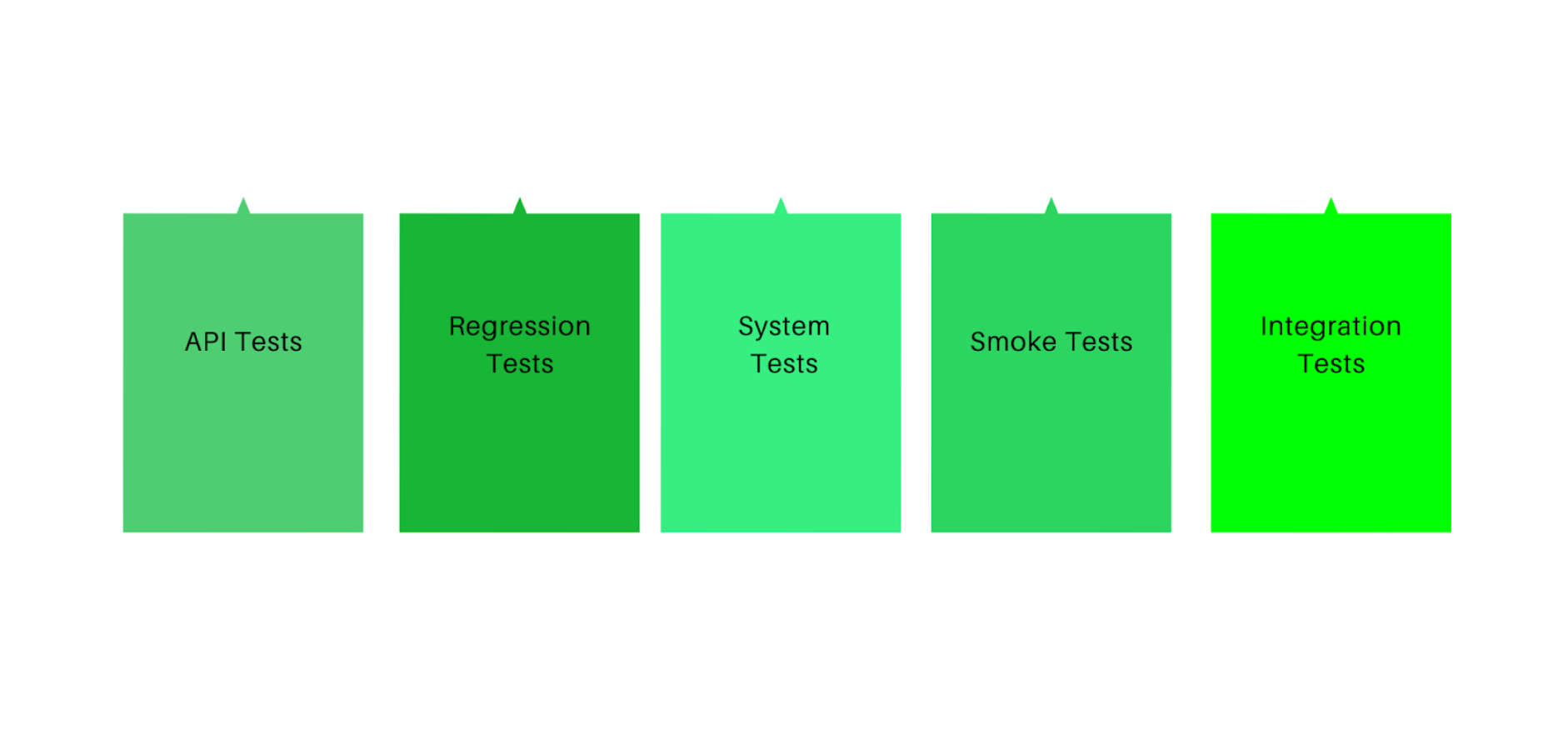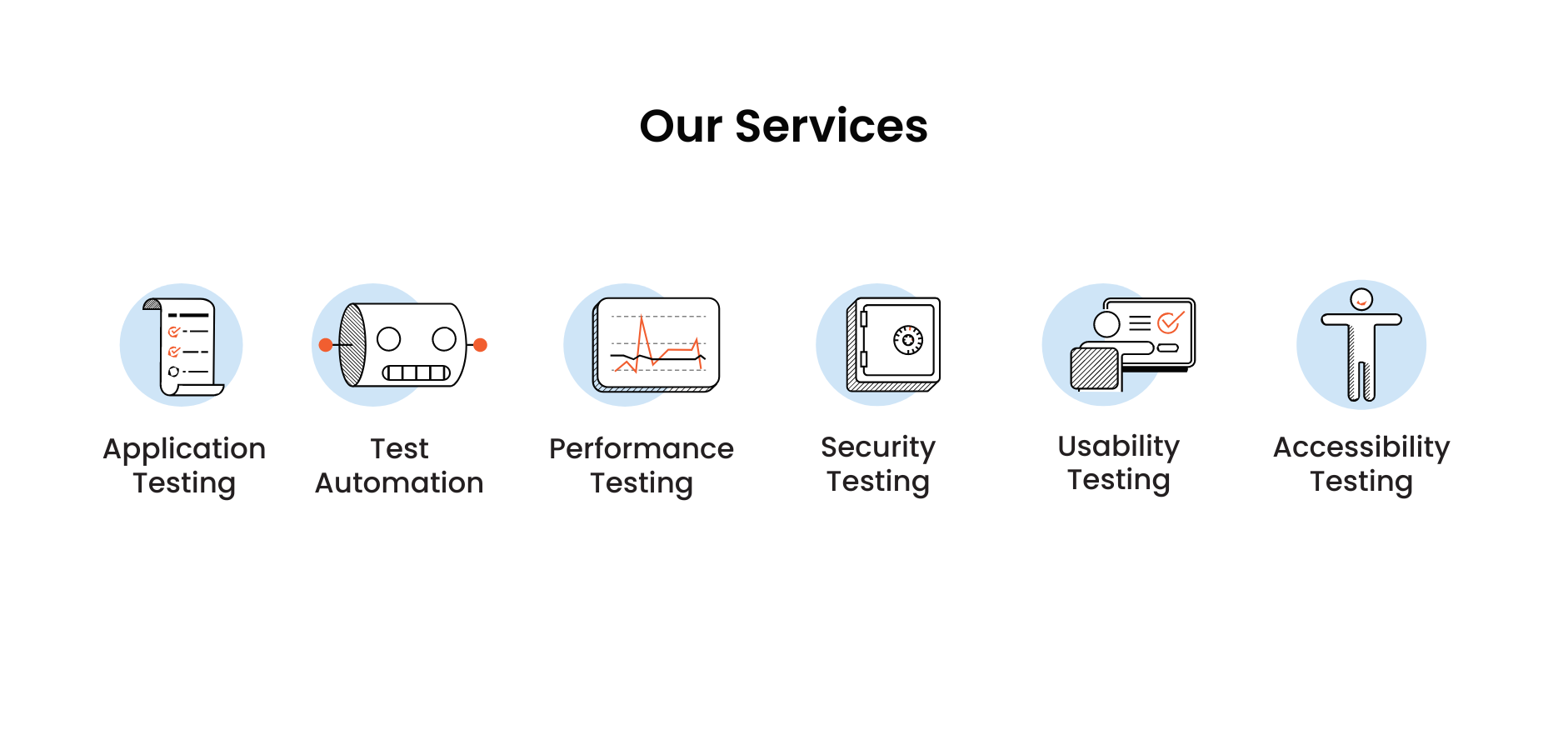The creation of complex software systems is an error-prone procedure. Bugs can occur at any phase of the development life cycle. These bugs can sometimes create challenges for the development teams regarding time and resource usage. So, the development team must detect these bugs and fix them for seamless flow.
One way to detect these bugs is to test the software at various stages of development. Testing can be costly sometimes. Multiple studies found that testing can take up to 50% of the total cost of developing the software. However, it is vital to ensure its integration with various systems, performance, and reliability across different working environments.

If you are testing software, your ultimate goal would be to minimize the testing time. Generally, there are two ways to perform testing. One is manual testing, and the other is automated testing.
Most organizations nowadays seek an approach that provides maximum results with minimal support. So, let’s discover how these testing strategies can provide maximum results. We will also explore the critical difference between manual and automation testing. By the end of this blog post, we will learn which is better, manual or automation testing. So, let’s delve into it.
What are Manual and Automated Testing?
1. Manual Testing
Manual testing, as its words means, involves a tester that manually validate some aspect of a software piece, such as its functionality, performance, and user interface design.
In manual testing, the tester inputs the data, and evaluates its response to check it operates correctly and meets the requirements. Implementing test cases is one of the most important aspects of manual testing.
These test cases are precisely built following predetermined test strategies, user experiences, or particular criteria. These tests usually cover various scenarios, including edge cases, use cases, and error conditions.
The first stage in the manual testing process is to get acquainted with the for the product. The final stage is the product launch after reporting and fixing the bugs. Manual testing steps include:

Initially, it begins with extracting the data to create test cases. Data can be gathered from the existing systems, end-user scenarios, and the product’s initial design. Once the data is gathered, the next step is to design the test cases. These test cases provide instructions on what to test, the expected output, and the data needed for input.
Executing these tests is one of the most critical parts of software testing. Anything discovered that is not aligned with the requirements will be considered a bug. It will be conveyed to the developers, and the test case will be marked as a failure. This process will continue until the last test case.
2. Automated Testing
Automated testing is incredibly useful in the rapidly changing world of technological innovation. The goal of automated testing is twofold: detecting errors and performance validation. Automated testing makes use of the dedicated software’s capabilities to develop scripts. These scripts follow instructions that mimic the steps a user or another piece of software interacts with the software under test.
These scripts look for inconsistencies between the observed and predicted outputs. If such differences are discovered, they are immediately reported. This technique enables the team working on the project to identify problems quickly. It helps in reducing the chance of faults spreading across the software. It also allows teams to receive immediate feedback on the project, deliver changes constantly, and continue to achieve high software quality.
Tests that are normally executed with automation are:

Automated tests begin by defining the test automation scope. The scope defines how much these tests will cover the product. Once it is specified, the next step is to select the right automation tool and start scripting. The next phase is to execute these tests and look for bugs.
One of the most important parts of this procedure is the script maintenance. Automated tests need to be updated regularly due to the software’s version or changing requirements.
What are the Differences between Manual and Automated Testing?
Let’s explore some of the differences between automated vs manual testing:
| Manual Testing | Automated Testing | |
| Execution Time | Manual tests consume much time as test cases are executed one after the other, and resource usage is also high. | As the tests are created and performed using dedicated tools, it takes less time and resources to conduct, resulting in faster product delivery. |
| Initial Setup | Tests are executed manually, so it takes less effort in the initial setup. | It takes much effort in the initial setup due to creating and maintaining the scripts/tools. |
| Reliability | The reliability of manual testing is lesser as the tests cannot be performed with high precision every time due to human error. | Automated tests are much more reliable as compared to manual tests. It is because these tests perform the same operation every time they run, making it more reliable for testing purposes. |
| Integration with CI/CD Pipelines | It requires manual execution of tests, so it is difficult to integrate into CI/CD pipelines. | Automated tests can be easily integrated with CI/CD pipelines due to the constant execution of tests and feedback. |
| Programming | Manual tests are non-programmable. No programming can be applied to create complex tests that retrieve defects. | In automated testing, testers can create complex tests to uncover hidden defects. So, with programming, this can be done. |
| Reusability | In manual testing, testers need to define new test cases for every function. | Test scripts are usable across various cycles of the software, thus making it more attractive for performing testing. |
| Reporting | Manual test output is reported as implemented, so there may be variations in the reporting. | It ensures consistency in tracking and reporting, so it generates standardized test reports. |
| Flexibility | It offers flexibility in adapting to the testing scenarios and changing requirements. | As programs are developed to perform these tests, it is less flexible to unanticipated changes. |
| Result Coverage | When a tester performs manual testing, the other development team members will not see the results. | In the case of automated testing, team members can sign in to the system to see the results in real time. This results in better collaboration, resulting in fine products. |
Lots of variables influence the difference between manual vs automated software testing. It includes a list of the application’s prerequisites, how many resources are available, the type of the application, and testing objectives. Organizations may use a hybrid strategy that contains the best of these two types to provide extensive test coverage and quick processes.
Which Is Better? Manual or Automated Testing?
A prevalent debate in software testing is manual testing vs automation testing and which is better. Well, the answer isn’t as clear-cut as you may imagine. Every testing method has a unique set of benefits and disadvantages.
There is no doubt about saving time and resources by employing automation testing. It’s ideal for instances in which you have a ton of tests to perform and need them completed swiftly and effectively. It is your go-to choice for the boring, monotonous jobs that can make a tester drowsy.
However, there is a catch. It can be challenging to employ a dedicated automated system for testing purposes. It needs skilled individuals, coding know-how, complicated systems, and finance. Moreover, the automation programs must evolve if your application requirements change. It’s like a website that needs grooming over time.
Unlike automation, manual testing depends on human inventiveness and perception. It’s ideal for testing non-functional features like user experience. It takes a little longer than automation and is prone to errors due to human involvement.
A balanced strategy is frequently the most successful one. Programmers and developers often use automated testing for repeatable and dependable test suits. At the same time, manual testing is used for complicated, exploratory, and subjective situations. This hybrid approach ensures that the product’s functional and non-functional parts are properly examined while maximizing the scope of testing.

Will Automated Testing Replace Manual Testing?
The answer is NO. It may not completely replace, but it can help to improve the testing procedures. Like manual testing evaluates functionality, behaviors, and aesthetics. This testing method is based on testers’ ability to imitate real-world user interactions. It is an ever-evolving process that adapts to the requirements of the project.
When it comes to client-side considerations, manual testing excels. This is because manual testers are unique in their capacity to sympathize with end users. It empowers them to view things from the user’s standpoint, allowing them to detect bugs that would otherwise go unreported. When evaluating a customer’s experience, human interaction is vital. It ensures that the software meets the intended audience’s requirements and interests.
Automation testing makes use of testing tools that are script-based. Automation tests are intended to perform established test cases quickly and accurately. It offers several advantages, especially when it involves repetitive operations or large-scale testing initiatives. However, the automation procedure necessitates caution in developing and running test programs. This makes it unsuitable for small-scale and short-term initiatives.
It is uncertain that automation testing will substitute manual testing soon because there will always be testing scenarios that necessitate the human touch. For example, automated tools can help to generate the test cases for the repetitive tasks.
Tools can also detect issues early in the development process, helping the manual testers to verify and validate the bugs. However, the proportion of automated vs manual testing may alter depending on project needs, financial constraints, and technological improvements.
In addition, manual and automation testing support each other. The future of software testing will likely feature a well-balanced method of maximizing productivity through automation while using the human element for complex and artistic test scenarios.
Learn More About Our Testing Services
In fact, there are many forms of testing, each with a specific function. Testing teams can extensively evaluate numerous elements of software systems due to the range of testing methodologies.
These numerous testing types offer specialized methods to produce high-quality, trustworthy applications. Regardless of whether it be for verifying functionality, evaluating effectiveness, assuring protection, or attending to particular customer demands. This allows a thorough assessment of a product’s positive and negative aspects during its development lifecycle.
So, it’s crucial to have a solid grasp of these testing types to know which performs better in specific scenarios. Various platforms can help in testing your software. QAlified offers various testing services that can help in the success and reliability of software applications. To learn about more about these testing services, you can also visit QAlified. These testing services include:
 This makes it easier to comply with regulations, reduce costs, and provide thorough quality assurance. As a result, testers and developers can choose the best testing techniques for specific projects. This knowledge should be addressed as it might result in expensive mistakes, safety violations, and unhappy consumers.
This makes it easier to comply with regulations, reduce costs, and provide thorough quality assurance. As a result, testers and developers can choose the best testing techniques for specific projects. This knowledge should be addressed as it might result in expensive mistakes, safety violations, and unhappy consumers.
Conclusion
Software testing involves manually evaluating the program or application or via test scripts to find any issues. Manual testing includes several test scenarios that analysts manually inspect for flaws. Testers need a keen eye for precision to produce optimal results during manual testing.
Conversely, with automation testing, the program or application is tested using automated test scripts. The ability of automation testing to operate across a wide area is a crucial component. Automation could be the greatest to complete the anticipated tests within the time limit. The difference between manual and automation testing depends upon various elements including reliability, usability, execution time and cost.
But a question may come to mind: which is better, manual or automation testing. Well, there is no single element that can help in choosing the best one. It varies from product to product and test scenarios. There are numerous elements that one takes into account when testing a product or any function, like integration, UI, and performance while selecting manual vs automation software testing…
Some may think that automation testing will replace manual testing completely. The answer will be NO. It can help improve the testing process, but will not replace the manual testing. Like if you are testing a software UI, automated tests will not determine how it looks and what areas for improvement.
In the future, testing teams will likely choose the best strategy based on the project’s unique requirements, striking an equilibrium between manual vs automated software testing. As technology advances, the position of these testing methodologies may alter to address new possibilities and problems.





